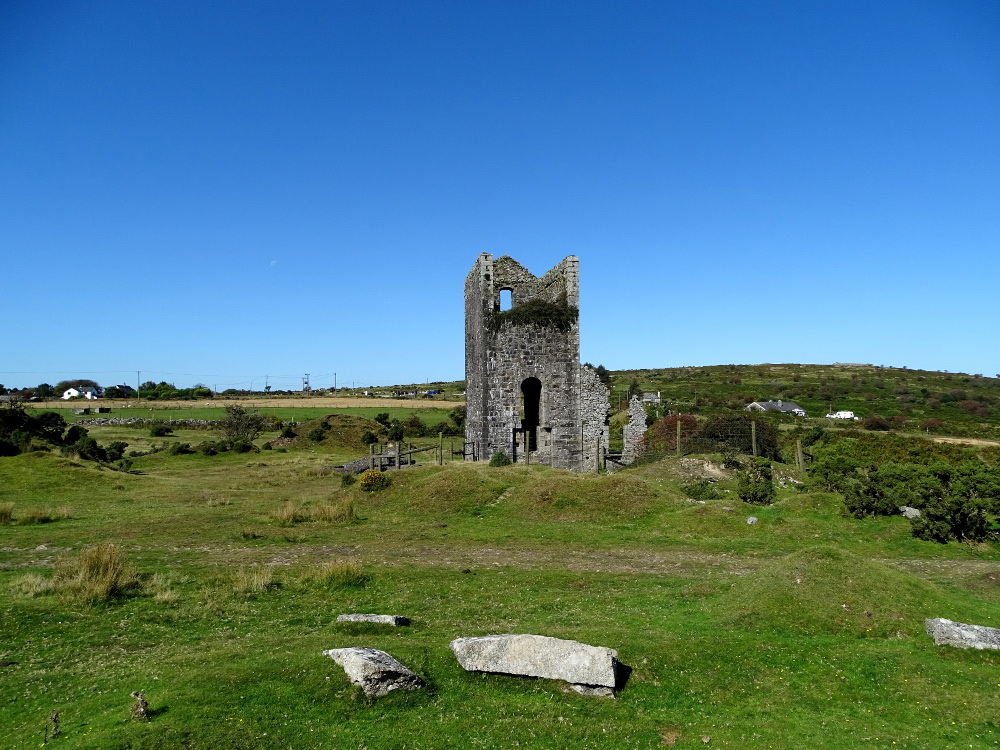The village of Minions and the surrounding landscape of Bodmin and Craddock Moors contain a wealth of historical features. This walk will aim to include as many of this elements are possible.
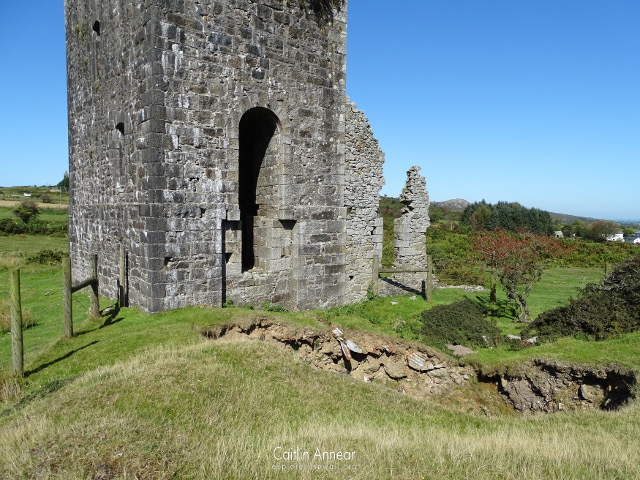
This walk will start from the car park in front of South Phoenix’s Houseman’s engine house. From here, if facing Houseman’s, you’ll have Wheal Jenkin behind you, Phoenix United off in the distance to the right and The Hurlers over to the left.
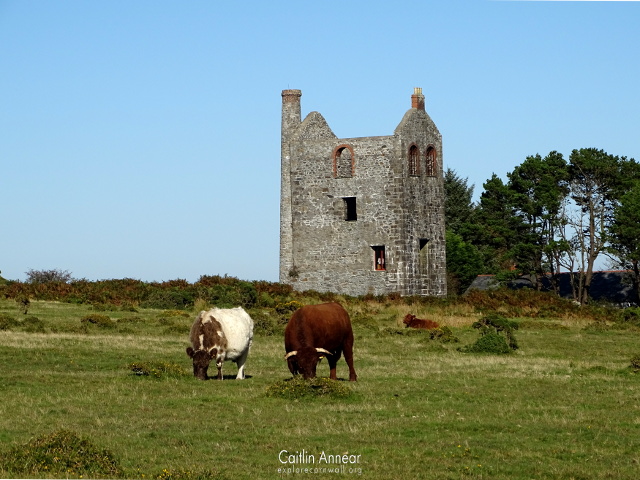
First go and take a look at the engine house in front. After spending some time as a farm house, it was turned into a visitors centre with some great displays about the area. Beyond it are some of the old shafts and burrows. Head north-north-east to join a wide track; this is the former bed of the Cheesewring Railway and on the other side are some concrete remains from a later reworking of the mine.
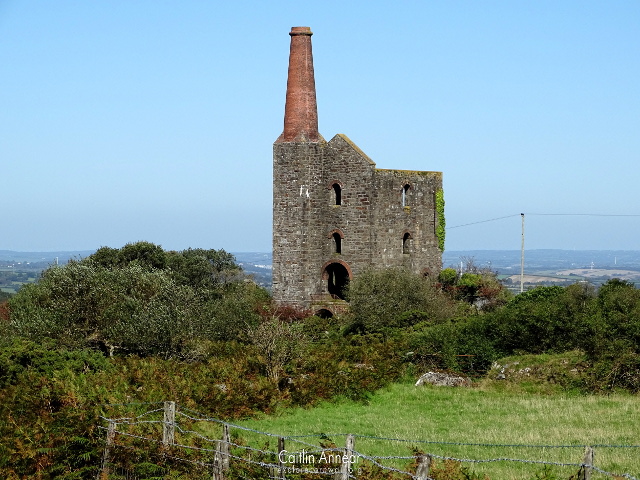
Wind your way down the hill, following the little sheep trails until you reach a tarmac road, turn left and follow it past a large house and then when it branches into a dirt track, take the dirt track. This path leads down to Prince of Wales engine house of Phoenix United Mine. With its striking square chimney this is from its most recent reworking and it made of up numerous smaller sets, the remains of which sit behind this.
After exploring this area, take the path north that runs through the centre of the area; this joins to the open waste land of the early Wheal Phoenix workings, looking similar to the ‘moonscapes’ of places such as Poldice. There are few remains of the mines early days, the majority of which are on the outskirts of the area, with the bases of two engine houses in the farm hedges along the east side.
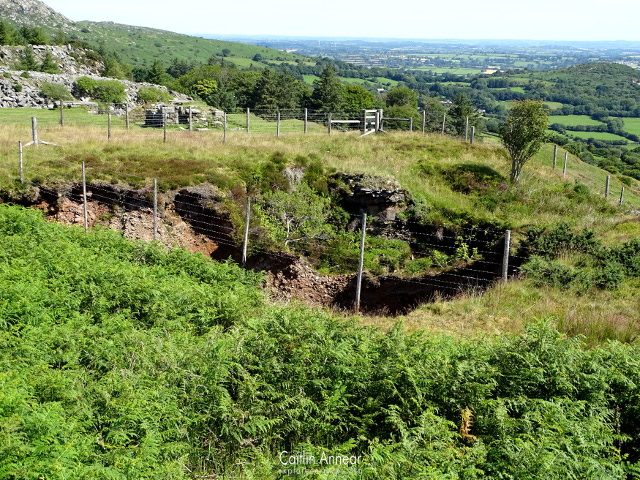
Once you’ve explored to your hearts content, head west around the private property to join a footpath that runs down the back of it. On your right are the overgrown remains of the engine house on West’s shaft. This path leads back to the road, cross and head up the hill following the rough route of the old Incline.
Straight up, you’ll reach Stowe’s Mine, another part of the great Phoenix sett. This is an interesting explore with both old and new features together. Take a look at the collapsed Stowe’s shaft, the fencing is still running through the middle, although in mid-air. Behind this is an even larger fenced area comprised of multiple shafts.
Between these two shaft is the same wide path we joined from South Phoenix, although the railway would have continued on to Cheesewring Quarry rather than further onto the moors (this is a nice optional addition to the walk, with parts of the railway track still visible in the quarry – also the views from the top are spectacular).
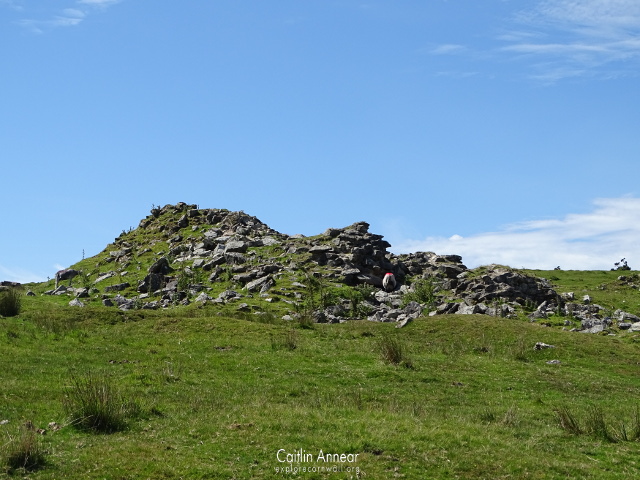
The path continues on past a line of old mine shafts into the West Phoenix section of the mine. Eventually as the path begins to curve around back towards the village, you’ll reach a collared shaft with a tree growing out of it with two large piles of granite rock on the hill behind. The shaft is from an earlier working of West Phoenix, while the rubble dates from the 1950’s when the two engine houses were demolished as part of a military exercise.
From here head back towards the village. Roughly halfway back, there is a detour that can be taken on the right which allows you to visit the concrete remains of Silver Valley mine, and just past these the engine house of New Phoenix Mine.
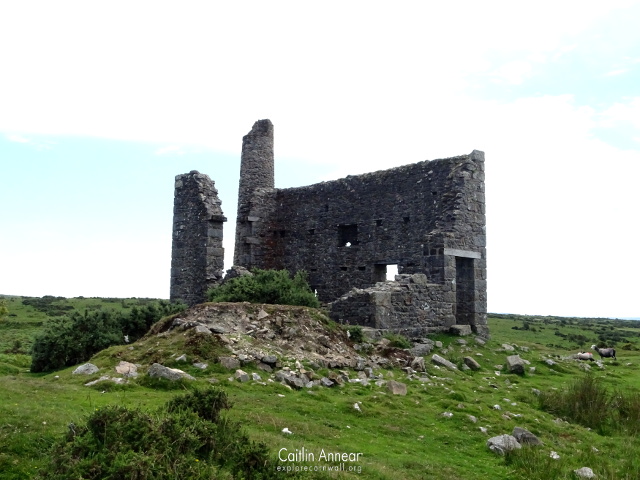
Heading back to the car park this ends the walk, although there is always the option to pop across the road and inspect the remains of Wheal Jenkin. The Liskeard and Caradon Railway track is still present and if you follow it onward does head through West Rosedown Mine and then only Marke Valley Mine.

Access to all of the sites mentioned is free to the public by being on common land. Some parts of the path may not be suitable for those with mobility issues. As its common land there are plenty of sheep, cows and horses roaming around, so be mindful.
There is plenty of free parking in the village.
